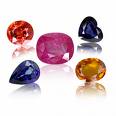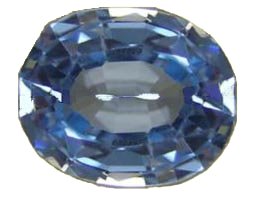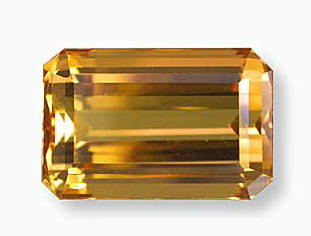|
Diamond |
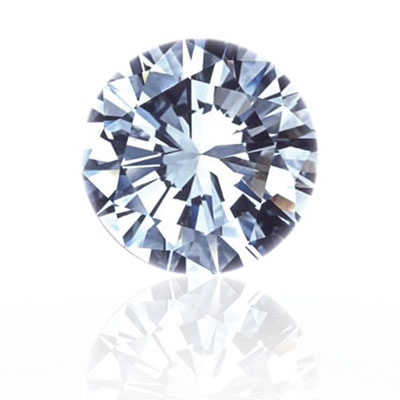
|
King of Gems, the ultimate symbol of desire. Dramatic, dazzling, never demure. Diamonds always have a story to tell, a secret to reveal and a mystery to solve. This eternal gem's ability to radiate power and inspire passion is unsurpassed. |
|
Diamond, |
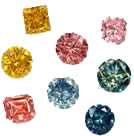
|
These true "miracles of nature" created over billions of years deep in the earth, by a combination of tremendous pressure, time and improbable circumstances are by definition not treated in any way. The color is permanent and can consist of every color in the rainbow, from the beautiful rare browns and yellows to the extremely rare and amazing reds and purple. |
|
Ruby |
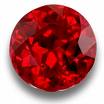
|
Celebrated in ancient manuscripts as the most precious of all gems, the ruby is the inspiration for innumerable legends and myths. To this day no red gemstone can compare to it's fiery rich red hues. It's brilliant, crimson colors are associated with passion and love. |
|
Emerald |
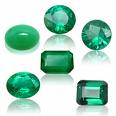
|
The amulet of good fortune, emeralds symbolize rebirth and an abundance of life. The rich green hue brings to mind regeneration of life and hope for new possibilities. The Emerald is the birthstone for May and talisman of Gemini. |
|
Sapphire |
|
Symbolizing a pledge of trust and loyalty these stones can be velvety blue, liquid blue, or even cornflower blue. Beloved for centuries as the ultimate blue gemstones. The rarest and most unique blue sapphires come from Kashmir. |
|
Sapphire, |
|
Like the endless colors that appear in the sky, Sapphires are also found in many other shades besides blue; the gold of sunrise, the reddish -orange of sunset and even the delicate violet of flowers. One of the rarest of the Fancy Color Sapphires is a pinkish orange to orange pink stone called Padparadsha. |
|
Pearl |

|
Pearls are mysterious gems which are born perfect needing to additional treatments to enhance their naturally luminescent beauty. They have been revered by many civilizations throughout history were once the rarest and most precious gems in the world. They occur naturally in a stunning palette of colors and variety of sizes and shapes. |
|
Amethyst |
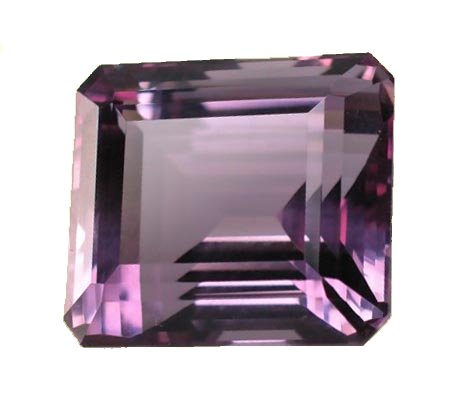
|
The purple color of Amethyst has long been considered a royal color, so it is not surprising that Amethyst was so much in demand through out history. Fine Amethysts are featured in British Crown Jewels and were also a favorite of Catherine the Great. Traditional birthstone for the month of February. |
|
Citrine |
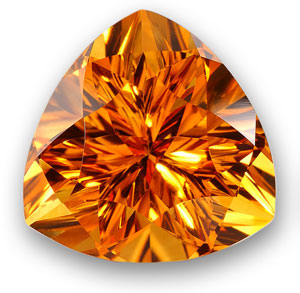
|
Named from French word for lemon "citron" since Citrine has juicy lemon color. Sunny and affordable, citrine can brighten almost any jewelry style, blending especially well with the yellow gold. Alternative birthstone of November |
|
Garnet |
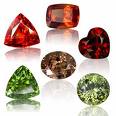
|
Garnet traces its roots to the
Nile Delta in 3100 BC were Egyptian artisans would craft the gemstone in to
beads or inlay them in to hand -wrought jewelry. The versatile garnet comes
in a virtual rainbow of colors. |
|
Topaz |
|
The Egyptians said that Topaz was colored with the golden glow by God of the Sun. Topaz sometimes has the amber gold of fine Cognac, or the blush of peach, and all beautiful warm browns and oranges in between. Same rare and exceptional examples are pale pink to sherry red. Blue was ones most rare color Of Topaz- is today most common, thanks to a stable enhancement process that turns colorless Topaz blue Birthstone of November and talisman of Sagittarius. |
|
Tourmaline |

|
Tourmaline has a palette of colors to express every mood. Vivid reds, hot pinks, verdant greens and blues abound in this marvelous gem variety. Not only does Tourmaline occur in spectacular range of colors, but it also combines those colors in a single stone gemstone called by-color Tourmaline. One color combination with a pink center and green outer rim is called "watermelon" Tourmaline, and is cut to thin slices similar to its namesake. |
|
Peridot |

|
Peridot is treasured in Hawaii as the goddess Pele's tears. The fresh lime green of Peridot is its distinctive signature Peridot is birthstone for for the month of August. |
|
Chrysoberyl |
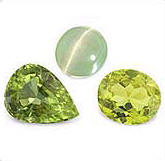
|
Valued for thousands of years, chrysoberyl is a surprising gem and an action gem, changing and moving in response to light. In the gem world, these special effects are known as phenomena. The gem varieties of chrysoberyl respond to light in surprising ways. The best-known special effect of chrysoberyl is an eye, which is displayed when certain specimens of this gem are cut in a dome shape. Cat's-eye chrysoberyl has a pupil-like band of light that sweeps across its dome. The "eye" is caused by fibrous inclusions that reflect the light in a sharply defined pattern. The effect is uncanny and quite cat-like. The color of cat's-eye chrysoberyl ranges from a honey-brown to an apple green with rich gold colors generally the most valued. |
|
Jade |

|
Since at least 2950 BC, jade has been treasured in China as the royal gemstone. Jade is a bridge between the spiritual and the material world. Jade is usually cut into smooth dome shapes called cabochons. Jadeite bangles are also very popular in Asian countries. Beads are also very beautiful and some important jadeite necklaces made during the art deco period have fetched hundreds of thousands of dollars in auctions. Most treasured for its vivid greens, jade also comes in lavender, pink, yellow, and white. |
|
Moonstone |
>
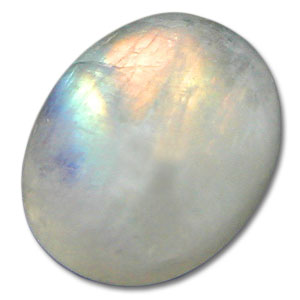
|
The ancient Romans theorized that moonstone, with its unearthly shimmer, was formed from frozen moonlight. This appealing gem variety does shine with a cool lunar light but it is the mineral feldspar, quite terrestrial in origin. The shimmer, which is called schiller or adularescence. Moonstones come in a variety of colors. The body color can range from colorless to gray, brown, yellow, green, or pink. The clarity ranges from transparent to translucent. The best moonstone has a blue sheen, perfect clarity, and a colorless body color. Fine moonstone is quite rare and becoming rarer. |
|
Opal |

|
Revered as a symbol of hope and purity, opal was dubbed the Queen of Gems by the ancient Romans because it encompassed the colors of all other gems. Opal is prized for its unique play of color, the ability to diffract light into flashes of rainbow color. Opal occurs in different colors, ranging from semi-transparent to opaque. The most common is white opal. The most valued variety, black opal, has a dark blue, gray, or black body color. Bright yellow, orange, or red fire opal are quite different from the other varieties of opal. Their day-glow tones, which are translucent to transparent, are beautiful with or without play of color. Opal, along with tourmaline, is the birthstone for October and the suggested gift for the fourteenth anniversary. |
|
Turquoise |
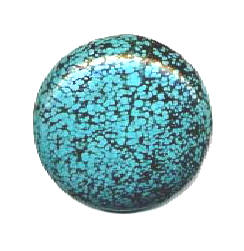
|
Turquoise is among the oldest known gemstones. It graced the necks of
Egyptian Pharaohs and adorned the ceremonial dress of early Native
Americans. This robin egg blue hued gemstone has been attributed with
healing powers, promoting the wearer's status and wealth. |
|
Lapis Lazuli |
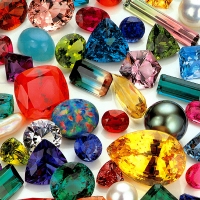
|
The beautiful blues in paintings from the Renaissance are thanks to the blue of lapis lazuli, the opaque blue gem material that was the secret ingredient in ultramarine, the valuable pigment that all the old masters used to capture the rich blues of the sea and sky and the robes of the Virgin Mary. The color wasn't duplicated by any other substance until 1834 but even now, some argue there is no substitute: unlike other pigments ultramarine centuries old still glows with rich color today.
As befits a gem that has been international currency for millennia, the name lapis lazuli is mélange of languages. From the Latin, lapis means stone. From the Arabic, azul means blue. |
|
Coral |
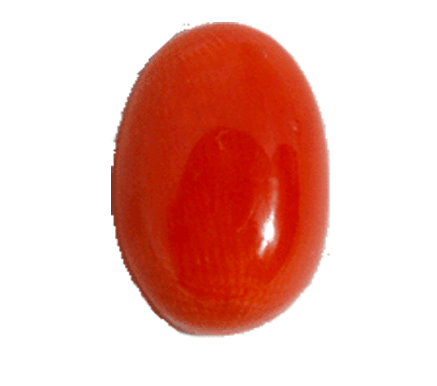
|
Used for adornment since prehistoric times, coral inlays and ornaments have been found in Celtic tombs from the Iron Age. An organic gemstone from the sea, coral was believed to bestow wisdom, protect from evil, heal wounds and calm the soul. White is the most common color in coral, but a variety of other shades can be found, including pink, orange, red and black. The rarest color is a deep red. Coral is commonly enhanced to improve its color and durability. White coral is bleached. Pink coral is permeated with a colorless wax and orange coral is stabilized with plastic. Black coral is sometimes bleached to create gold coral. Occasionally, red coral is dyed to deepen or uniform its color. All commonly used forms of coral enhancement are stable. |
|
Phenomenal |
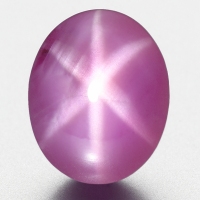
|
Exciting! Alluring! Imagine the sense of awe the ancients must have felt when they first gazed at phenomenal gemstones. Imagine the thoughts that must have coursed through their minds! Now, open your mind to that same sense of wonder as you experience a gemstone that transcends the mystery of color, to the magic of phenomenal Certain, special gemstones have the unique ability to display a majestic star pattern, the intriguing feline like cat's-eye, the almost hypnotic billowing sheen of moonstone, and the playful iridescent patterns of contrasting color seen in fire agates and ammolites. The star effect, known as asterism, appears as rays of a star across the domed surface of the gemstone and is most often seen in ruby, sapphire, quartz, garnet and spinel. It is produced when a strong source of light reflects off of the multitude of geometrically arranged layers of threadlike inclusions that inhabit these unique gems. If the threads in the gemstone all align themselves in a single direction, much like the strands in a spool of thread, the reflection will appear as a single ray of light called chatoyancy, or cat's-eye. The cat's-eyes occur in chrysoberyl, tourmaline and quartz. The silvery glow that floats across the surface of a gem somewhat like a moonbeam across a fog enshrouded lake, is called adularescence, or the moonstone effect. |

